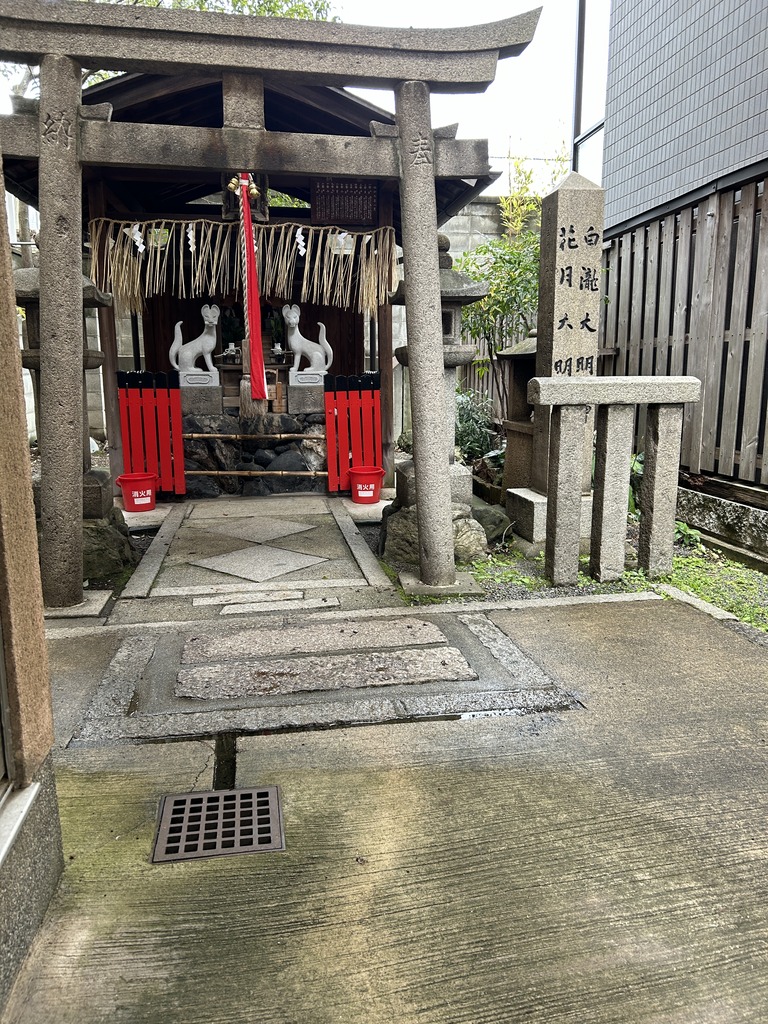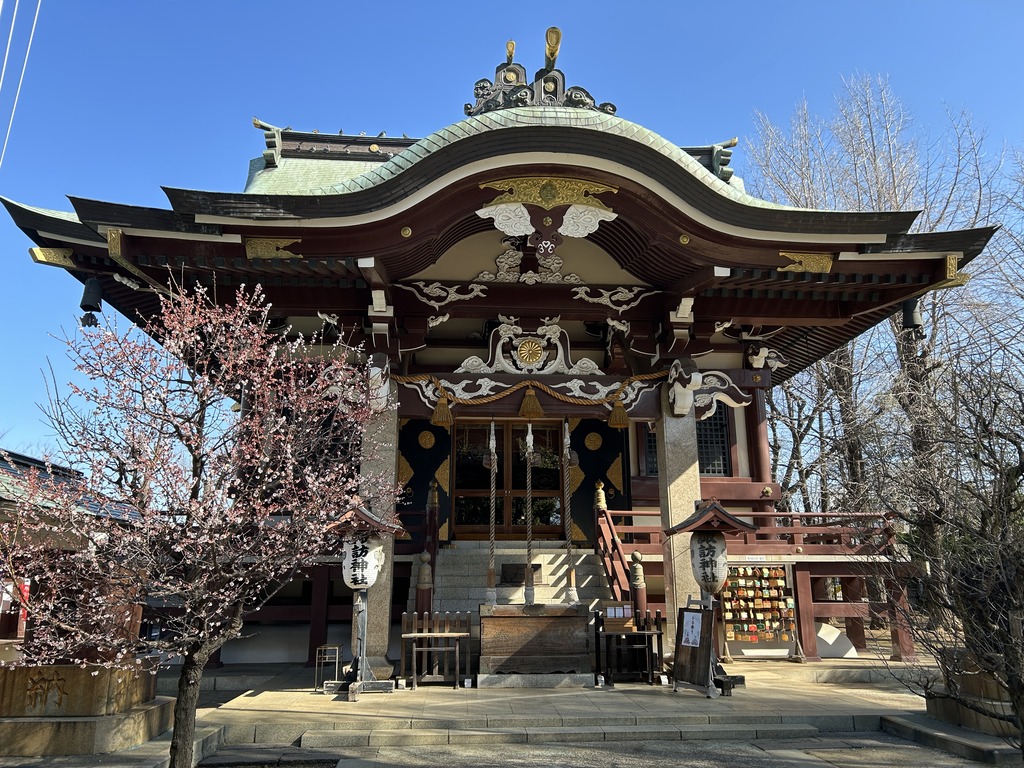Travel Lookback: Shinto
⛩️ 🗾 🗻
It’s been nearly two months since I left for Japan. In that time I’ve had a lot of opportunities to wrangle my thoughts into something more coherent. My trip lasted ten days and had me covering Tokyo, Kyoto, Osaka and Nara. I stayed in one neighborhood of Kyoto and two in Tokyo to cover this territory. I travelled with two other lifelong friends with a loosely coupled schedule so that we could be free to re-arrange at a whim.
Since the trip was originally planned in 2020 but cancelled due to COVID, I had a lot of opportunities to consider what I wanted out of it. As a perennial meganerd and rhythm gamer, I was of course looking forward to the dazzling lights of Akihabara and its ubiquitous arcades and anime stores. These places did not disappoint and made the trip worth it by itself. I was also very interested in another aspect of Japan: it’s spirituality. Specifically Shinto.
Religion in Japan is a complicated subject that deserves its own treatment but a quick summary can basically be boiled down to; a highly secular population who practices Shinto, the indigenous animistic religion, and Mahayana Buddhism imported from China, sometimes syncretized with Shinto but mostly separate via historical happenstance. Shinto itself is a complicated thing to classify as a religion by American standards of Christianity. It does not have strict doctrinal commitments, its principally animistic or polytheistic, shrines are distributed all over the country in all sizes with many festivals, and it has periodically been co-opted by the government for authoritarian identity building projects.
There is a lot of positives I glean from this religion; I like its decentralized, localist nature that focuses on spirits of the natural world. Kami, whose definition is as equally complicated as Shinto, are present in everything. The mountains, forests, weather, rivers, the villages, the roads, even deified people, concepts, machines, places, ideas. The world is full of gods and alive with their machinations. This way of relating to spiritual matters to me feels more natural that attempting to commune with a distant, authoritarian ruler of the universe who demands a doctrinal purity incompatible with personal flourishing or liberation.
This animistic, ubiquitous presence of the Kami also leads to a tendency to treat the natural world with much more respect than can be seen in some other cultures. It’s a great moral wrong to simply destroy forests or mountains or pollute rivers if you know you might be harming a spiritual being, to say nothing of the actual physical material conditions you are creating. This focus on the world we live in makes more sense than appealing to rules-based doctrine for the hope of a potential reward in a future life, or failing that an eternal punishment. As someone who sees American culture as very extractive and business-oriented, and often sanctioned by one god, this alternative has a lot of refreshing appeal.
Ancestor worship, while less common in Shinto in the modern day, is still practiced. While this is not something that personally factors into my practice of religion, I think there is a lot appeal in remembering the dead as though they are still with us. For bad and good, our collective ancestors have brought us to where we are today. If they were not here, we would not be here. I think this fact makes for good reflection on our place in the world, and what we want out of life.
I must also say that there’s a lot of aesthetic pleasantness in the ability to simply visit temples and shrines. Of course you can have massive complexes dedicated to specific Kami like Fushimi Inari taisha, but there are also thousands of small street side shrines and little ones nestled into neighborhoods. In my venturing I sought these places out which were almost always empty and they were places where I felt my most spiritual, slightly displaced from city live and travel it was great to just have a space where I could be outdoors and disconnect from life for a moment.


Ritual is another aspect of Shinto that resonates with me. Though not exclusive to Shinto by any means, while some religions I have experience with (Protestantism) claim that religion is hollow and pointless, for me its the opposite. Their predictability has a grounding effect that pulls me out of the worries of the day and into spiritual realm of something different. This too can be seen in the likes of mindfulness meditation, a sort of quiet calming grounding to refocus yourself on what is important. Setting aside decorated but personal space for worship is important to me. It’s another mental pathway I can take towards this grounding that helps me feel more spiritual.
As someone sympathetic to alternative religions but who finds himself pretty spiritually homeless at times, Shinto speaks to me in a way I don’t find in monotheistic faiths. I made great effort to give many offerings to the Kami, practice my prayer and ritual form and I loved that these things were immediately accessible to me as a visitor in Japan. Back in the states, however, there are less than five active Shinto temples; mostly in Hawaii and on the west coast. As someone who lives in the Midwest, this makes practice at shrines unviable. It’s possible that I could procure my own Ofuda (talisman imbued with spiritual power), Kamidana (home of the Kami, personal shrine) and shrine space to practice at home, but that pushes into another question of exploration; is co opting the faith of the Japanese people appropriate in the first place?
While many Japanese themselves might say No if they are more nationalistic, many others think its totally acceptable and openly welcome foreigners in practice, so long as they are respectful of the traditions, culture, and context in which Shinto happens. This is all very reasonable asks of respect that I think all people considering a faith outside of their nation should consider, but it also makes me wonder if I should be looking for something with a similar mentality that is more accessible in America. Does such a thing exist? So far, I’ve mostly turned up pretty empty but I will keep exploring. I do think there is something to be said of uniquely modern American faith journeys, but it does require dipping into new religious movements that require a lot of vetting.
I’ve found that as my 30s drag on, I have more of that itch to find what fits for discovering the truly numinous experiences in life. So far my exploration of American Deism has lead me towards Pantheism, Transcendentalism and perhaps even Unitarian Universalism but I am still grappling with what that all means in relation to how I live my life. As of yet I have not found a totally satisfactory answer and maybe I never will, but I will keep searching.
This was the first of several travel lookbacks I intend to write about my time and Japan and what stuck out to me. Religion, culture and politics will be in focus for a long time, especially as America’s domestic political situation continues to heat up in light of several global conflicts and the upcoming election. Putting pen to paper even on a corner of the internet that nobody is reading really helps me clear my mind and organize my thoughts into meaningful chunks, I hope someone is able to resonate with the work produced here.